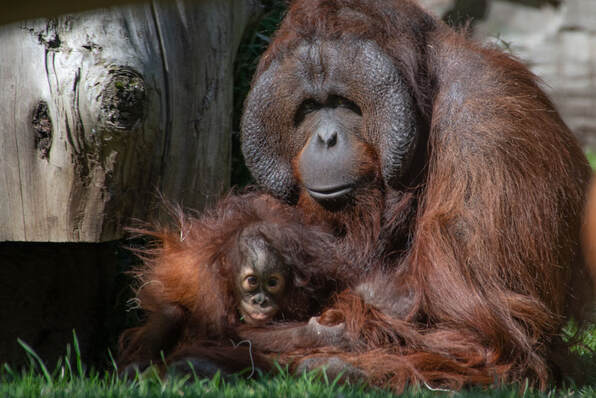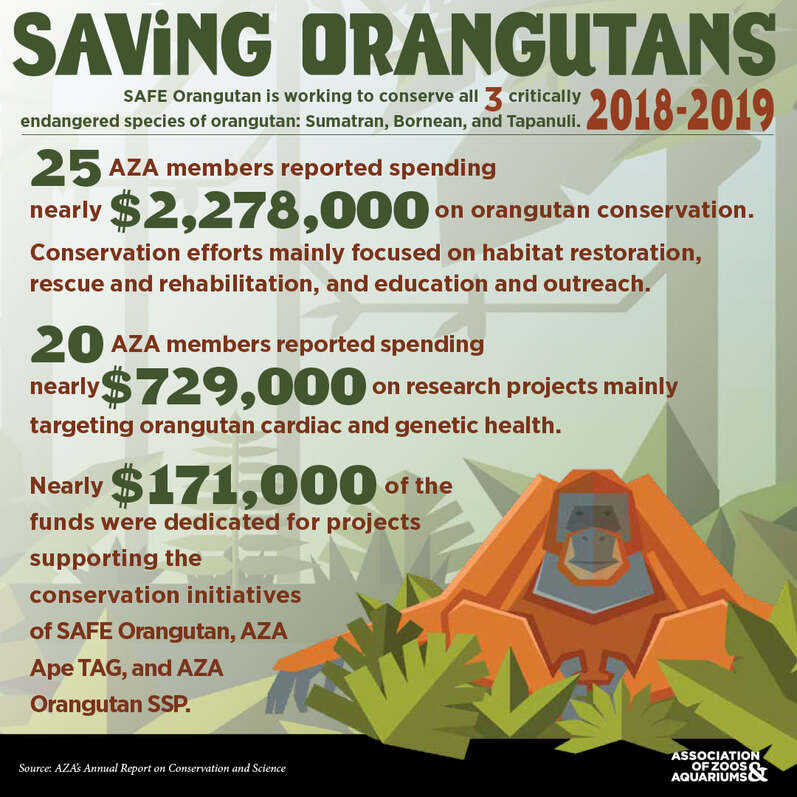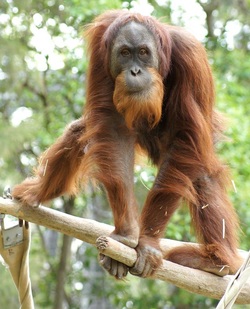#PONGOPOST

Like most male orangutans, 17-year-old Bob loves to eat … in peace! Orangutan fathers usually don't get too caught up in family life and like to spend most of their time alone. However, Bob is a very easygoing dad, and tolerates lots of shenanigans from 21-month old Jolene. Recently, keepers observed a sweet moment where Jolene sat in Bob's lap and pinched his cheeks while he munched on some browse. Bob tolerated this for several minutes while mom Kitra got to enjoy some rest. #BestDadEver #PongoPosts
|
The Orangutan Species Survival Plan®
Formed in the 1980's, the Orangutan SSP is a group of dedicated professionals with five primary goals:
|
Welfare of individuals, social groups and populations
Together with the Association of Zoos and Aquariums, the Orangutan SSP serves the accredited zoos that house orangutans in the United States, Canada, Mexico and South Korea.
Working closely with respected professionals in the field, the SSP provides help and guidance to zoos housing orangutans. Together, zoos and the SSP seek to provide the best possible environment for these amazing apes. |
AZA members are committed to #orangutan conservation. Between 2018 and 2019, over $2.2 million was spent on orangutan #conservation focused on habitat restoration, rescue and rehabilitation, and education and outreach. #WeAreAZA #AZASAFE #SavingSpecies
|
Orangutans in Zoos
Orangutans live in 50+ accredited zoos all across the United States, Canada, Mexico and South Korea. Find out where they are and more about their exhibits here. |
Resources
This website serves as a central forum for important information for members of the SSP. Click here to enter the Member’s section and find out the latest happenings for and about the Orangutan Species Survival Plan. |




